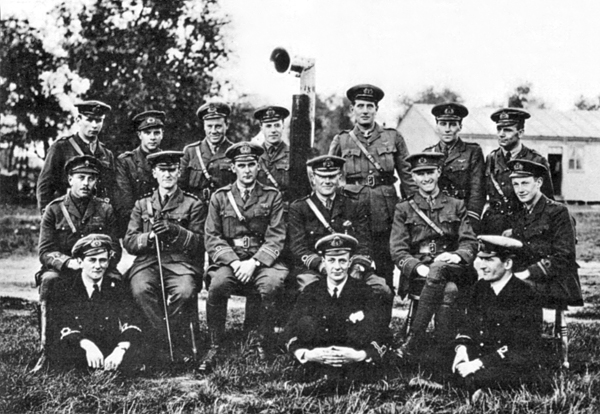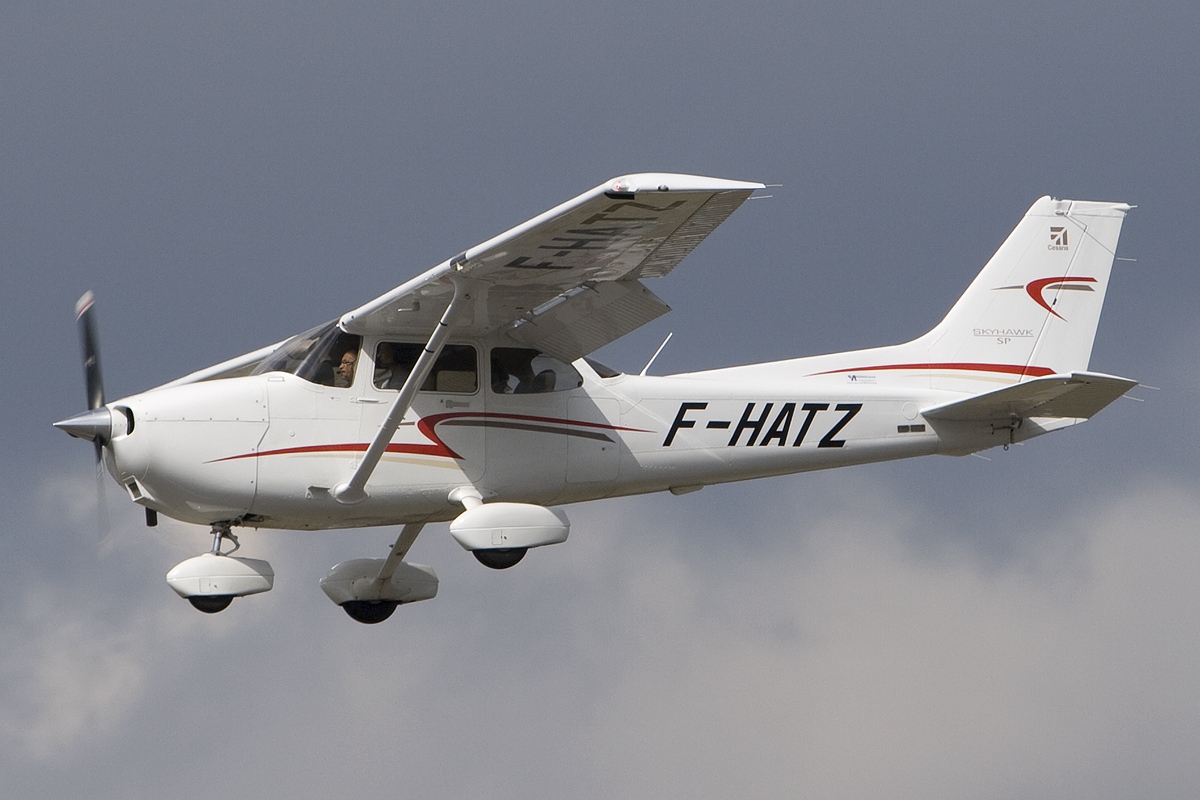|
Beardmore W.B.V
The Beardmore W.B.V was a prototype British single-engine shipborne biplane fighter of World War I developed by Beardmore.Taylor 1990, p.57. It was not successful, only two being completed. Development and design At the same time as developing the Beardmore W.B.IV, G. Tilghman Richards, the chief designer of Beardmore, designed a second aircraft to meet an Admiralty requirement for a ship-borne fighter aircraft to be armed with a 37 mm Le-Puteaux quick firing gun in order to destroy airships.Bruce 1965, p.74. The resulting aircraft, the W.B.V, was a single seater two-bay tractor biplane powered by a 200 hp (149 kW) Hispano-Suiza engine. The wings folded for storage on board ship. The manually loaded Le-Puteaux gun was mounted between the cylinder banks of the V-8 engine, firing through a hollow propeller shaft. Unlike the W.B.V, the W.B.IV was not fitted with a buoyancy chamber, being instead fitted with inflatable flotation bags.Mason 1992, pp.127-128. The f ... [...More Info...] [...Related Items...] OR: [Wikipedia] [Google] [Baidu] |
WikiProject Aircraft
A WikiProject, or Wikiproject, is a Wikimedia movement affinity group for contributors with shared goals. WikiProjects are prevalent within the largest wiki, Wikipedia, and exist to varying degrees within sister projects such as Wiktionary, Wikiquote, Wikidata, and Wikisource. They also exist in different languages, and translation of articles is a form of their collaboration. During the COVID-19 pandemic, CBS News noted the role of Wikipedia's WikiProject Medicine in maintaining the accuracy of articles related to the disease. Another WikiProject that has drawn attention is WikiProject Women Scientists, which was profiled by '' Smithsonian'' for its efforts to improve coverage of women scientists which the profile noted had "helped increase the number of female scientists on Wikipedia from around 1,600 to over 5,000". On Wikipedia Some Wikipedia WikiProjects are substantial enough to engage in cooperative activities with outside organizations relevant to the field at issue. For e ... [...More Info...] [...Related Items...] OR: [Wikipedia] [Google] [Baidu] |
Vickers Machine Gun
The Vickers machine gun or Vickers gun is a Water cooling, water-cooled .303 British (7.7 mm) machine gun produced by Vickers Limited, originally for the British Army. The gun was operated by a three-man crew but typically required more men to move and operate it: one fired, one fed the ammunition, the others helped to carry the weapon, its ammunition, and spare parts. It was in service from before the First World War until the 1960s, with air-cooled versions of it on many Allies of World War I, Allied World War I fighter aircraft. The weapon had a reputation for great solidity and reliability. Ian V. Hogg, in ''Weapons & War Machines'', describes an action that took place in August 1916, during which the British 100th Company of the Machine Gun Corps fired their ten Vickers guns to deliver sustained fire for twelve hours. Using 100 barrels, they fired a million rounds without breakdowns. "It was this absolute foolproof reliability which endeared the Vickers to every Britis ... [...More Info...] [...Related Items...] OR: [Wikipedia] [Google] [Baidu] |
Carrier-based Aircraft
Carrier-based aircraft, sometimes known as carrier-capable aircraft or carrier-borne aircraft, are naval aircraft designed for operations from aircraft carriers. They must be able to launch in a short distance and be sturdy enough to withstand the abrupt forces of launching from and recovering on a pitching deck. In addition, their wings are generally able to fold up, easing operations in tight quarters. Such aircraft are designed for many purposes including air-to-air combat, surface attack, anti-submarine warfare (ASW), search and rescue (SAR), transport (COD), weather observation, reconnaissance and airborne early warning and control (AEW&C) duties.Fred T Jane (2005). ''Jane's All the World's Aircraft''. Jane's Information Group. The term is generally applied only to fixed-wing aircraft, as naval helicopters are able to operate from a wider variety of ships, including helicopter carriers, destroyers, frigates and container ships. History The 1903 advent of fixed-win ... [...More Info...] [...Related Items...] OR: [Wikipedia] [Google] [Baidu] |
Beardmore Aircraft
Beardmore can refer to: *Andrew Beardmore, better known as Andy Moor, English trance DJ, producer and remixer *Bob Beardmore, British rugby league footballer *Bud Beardmore (1939–2016), American lacrosse coach *Jim Beardmore, Former All-American lacrosse goalie and current coach *Nathaniel Beardmore (1816-1872), British engineer and hydrologist *William Beardmore, 1st Baron Invernairn, a Scottish industrialist :*William Beardmore and Company, the engineering company of the above Beardmore :*Beardmore 160 hp, a water-cooled aero engine built for the above company * Beardmore, Ontario, a small community in Northern Ontario * Beardmore, Victoria, a small town in Gippsland, Victoria, Australia *Beardmore Glacier in Antarctica, one of the world's largest glaciers *Beardmore Relics The Beardmore Relics are a cache of Viking Age artifacts, said to have been unearthed near Beardmore, Ontario, Canada in the 1930s. The cache consists of a Viking Age sword, an axe head, and a bar of unde ... [...More Info...] [...Related Items...] OR: [Wikipedia] [Google] [Baidu] |
1910s British Fighter Aircraft
Year 191 ( CXCI) was a common year starting on Friday (link will display the full calendar) of the Julian calendar. At the time, it was known as the Year of the Consulship of Apronianus and Bradua (or, less frequently, year 944 ''Ab urbe condita''). The denomination 191 for this year has been used since the early medieval period, when the Anno Domini calendar era became the prevalent method in Europe for naming years. Events By place Parthia * King Vologases IV of Parthia dies after a 44-year reign, and is succeeded by his son Vologases V. China * A coalition of Chinese warlords from the east of Hangu Pass launches a punitive campaign against the warlord Dong Zhuo, who seized control of the central government in 189, and held the figurehead Emperor Xian hostage. After suffering some defeats against the coalition forces, Dong Zhuo forcefully relocates the imperial capital from Luoyang to Chang'an. Before leaving, Dong Zhuo orders his troops to loot the tombs of the Ha ... [...More Info...] [...Related Items...] OR: [Wikipedia] [Google] [Baidu] |
SPAD S
SPAD may refer to: In aircraft manufacture * Société Pour L'Aviation et ses Dérivés, also Société Provisoire des Aéroplanes Deperdussin and Blériot-SPAD, French aircraft manufacturer (1912–1921) * SPAD VII, SPAD S.XII and SPAD S.XIII, French fighter planes of World War I produced by Société Pour L'Aviation et ses Dérivés * A-1 Skyraider, nicknamed ''Spad'', an attack aircraft (1950s and 1960s) * Simple Plastic Airplane Design, a type of radio-controlled model airplane In science * Single Pass Albumin Dialysis, liver dialysis * Single-photon avalanche diode, a photodetector Other uses * Special adviser (UK), a government post * Self-propelled air defence, weapons * Signal passed at danger by a train * ''Suruhanjaya Pengangkutan Awam Darat'', the Land Public Transport Commission of Malaysia See also * Spade (other) A spade is a digging and gardening tool. Spade or Spades may also refer to: Cards * Spades (card game), a trick-taking card game *Spades (s ... [...More Info...] [...Related Items...] OR: [Wikipedia] [Google] [Baidu] |
303 British
The .303 British (designated as the 303 British by the C.I.P. and SAAMI) or 7.7×56mmR, is a calibre rimmed rifle cartridge. The .303 inch bore diameter is measured between rifling lands as is the common practice in Europe which follows the traditional black powder convention. It was first manufactured in Britain as a stop-gap black powder round put into service in December 1888 for the Lee–Metford rifle. From 1891 the cartridge used smokeless powder which had been the intention from the outset, but the decision on which smokeless powder to adopt had been delayed. It was the standard British and Commonwealth military cartridge for rifles and machine guns from 1889 until the 1950s when it was replaced by the 7.62×51mm NATO. Cartridge specifications The .303 British has 3.64 ml (56 grains H2O) cartridge case capacity. The pronounced tapering exterior shape of the case was designed to promote reliable case feeding and extraction in bolt-action rifles and machine guns a ... [...More Info...] [...Related Items...] OR: [Wikipedia] [Google] [Baidu] |
Hispano-Suiza 8
The Hispano-Suiza 8 was a water-cooled V8 SOHC aero engine introduced by Hispano-Suiza in 1914, and was the most commonly used liquid-cooled engine in the aircraft of the Entente Powers during the First World War. The original Hispano-Suiza 8A was rated at and the later, larger displacement Hispano-Suiza 8F reached . Hispano-Suiza 8 engines and variants produced by Hispano-Suiza and other companies under licence were built in twenty-one factories in Spain, France, Britain, Italy, and the U.S. Derivatives of the engine were also used abroad to power numerous aircraft types and the engine can be considered as the ancestor of another successful engine by the same designer, the Hispano-Suiza 12Y (and Soviet Klimov V12 derivative aero-engines) which was in service during the Second World War. Design and development Origins At the beginning of World War I, the production lines of the Barcelona based Hispano-Suiza automobile and engine company were switched to the production of ... [...More Info...] [...Related Items...] OR: [Wikipedia] [Google] [Baidu] |
RNAS
The Royal Naval Air Service (RNAS) was the air arm of the Royal Navy, under the direction of the Admiralty's Air Department, and existed formally from 1 July 1914 to 1 April 1918, when it was merged with the British Army's Royal Flying Corps to form the Royal Air Force (RAF), the world's first independent air force. It was replaced by the Fleet Air Arm, initially consisting of those RAF units that normally operated from ships, but emerging as a separate unit similar to the original RNAS by the time of World War 2. Background In 1908, the British Government recognised the military potential of aircraft. The Prime Minister, H. H. Asquith, approved the formation of an "Advisory Committee for Aeronautics" and an "Aerial Sub-Committee of the Committee of Imperial Defence". Both committees were composed of politicians, army officers and Royal Navy officers. On 21 July 1908 Captain Reginald Bacon, who was a member of the Aerial Navigation sub-committee, submitted to the First Sea L ... [...More Info...] [...Related Items...] OR: [Wikipedia] [Google] [Baidu] |
WikiProject Aircraft/page Content
A WikiProject, or Wikiproject, is a Wikimedia movement affinity group for contributors with shared goals. WikiProjects are prevalent within the largest wiki, Wikipedia, and exist to varying degrees within sister projects such as Wiktionary, Wikiquote, Wikidata, and Wikisource. They also exist in different languages, and translation of articles is a form of their collaboration. During the COVID-19 pandemic, CBS News noted the role of Wikipedia's WikiProject Medicine in maintaining the accuracy of articles related to the disease. Another WikiProject that has drawn attention is WikiProject Women Scientists, which was profiled by '' Smithsonian'' for its efforts to improve coverage of women scientists which the profile noted had "helped increase the number of female scientists on Wikipedia from around 1,600 to over 5,000". On Wikipedia Some Wikipedia WikiProjects are substantial enough to engage in cooperative activities with outside organizations relevant to the field at issue. For e ... [...More Info...] [...Related Items...] OR: [Wikipedia] [Google] [Baidu] |
Tractor Configuration
In aviation, the term tractor configuration refers to an aircraft constructed in the standard configuration with its engine mounted with the propeller in front of it so that the aircraft is "pulled" through the air. Oppositely, the pusher configuration places the airscrew behind and propels the aircraft forward. Through common usage, the word "propeller" has come to mean any airscrew, whether it actually propels or pulls the plane. In the early years of powered aviation both tractor and pusher designs were common. However, by the midpoint of the First World War, interest in pushers declined and the tractor configuration dominated. Today, propeller-driven aircraft are assumed to be tractors unless it is stated otherwise. Origins The first airplane to have a "tractor" configuration was the Goupy No.2 (first flight on 11 March 1909) designed by Mario Calderara and financed by Ambroise Goupy at the French firm Blériot Aéronautique. When it was constructed, it was the fast ... [...More Info...] [...Related Items...] OR: [Wikipedia] [Google] [Baidu] |
.jpg)




